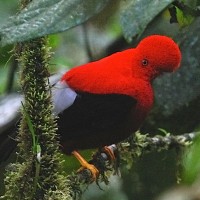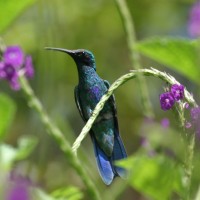- Overview
- Full Itinerary
- Extensions
- Photo Gallery
- Costing
- Travel Details
- Trip Reports
- Guide
- Know Before You Go
- Other Trips You May Like
Join Naturalist Journeys on an exploration of the birds and other cultural delights of Colombia’s Coffee Region: the famous “Eje Cafetero.” This area, designated by UNESCO as a World Heritage Landscape, offers delightful birds, landscapes, food, and accommodations. Our Colombia birding tour is designed to have a relaxed pace, staying at only three hotels and allowing a lot of time for personal enjoyment and enrichment. We begin in the town of Pereira in the heart of the region, a medium-sized city that now offers direct flights to the U.S., making arrivals and departures a snap. Two of our hotels are right in the middle of the coffee region, so in addition to enjoying your morning beverage “straight from the farm,” we have easy access to renowned birding areas such as Otún-Quimbaya Flora and Fauna Sanctuary near Santa Rosa (with its famous flocks of Red-ruffed Fruitcrows) and the Rio Blanco Nature Reserve just outside Manizales, with a bird list of over 500 species and legendary feeding stations for antpittas.
Our Colombia bird tour also includes nights at the high elevations of Los Nevados del Ruíz volcano, where you can experience permanent snowfields only a few degrees north of the equator! This allows us to explore the unique area of the Central Andes above treeline, covered in a vegetation type called páramo, that is the habitat for many rare, unique, and difficult-to-find species. Although high in elevation and often damp and cold, the views can be fantastic as we search for specialties found only here such as Buffy Helmetcrest, Andean Siskin, Stout-billed Cinclodes, White-throated Spinetail, and Plumbeous Sierra-Finch. Our hotel here has natural hot springs that you can enjoy if you’re not distracted by the numerous iridescent hummingbirds at the feeders just outside!
This is also a cultural and natural history tour of Colombia, so we provide plenty of opportunities for interesting and unique activities other than birding. We spend one morning learning how to shop for and cook (and eat!) the famous Colombian dish called sancocho de gallina, sure to be a treat for the eyes and stomachs. Most importantly, most of the sites we stay at and visit are sites of active, community-based ecotourism and conservation projects so our presence directly contributes to their continued protection. Finally, we enjoy the warmth and hospitality of the Colombian people wherever we go.
This tour also visits the vibrant city of Cali and the warm Cauca Valley to spend a few days in and around the Western Cordillera of the Andes. The parts of the Cordillera just west of the city have been legendary birding areas for years due to the combination of easy and fast access from the city, extraordinarily high biodiversity, and unique species, especially on the west slope of the Cordillera. This region, known as the Chocó, is one of the wettest places on Earth, in addition to being extremely high in bird and biodiversity. Our extension is based at a lovely, small, boutique hotel on the western edge of Cali, so the extension provides a nice way to wind down from the main tour in a comfortable place. We use this hotel as our base to explore parts of the adjacent Western Cordillera and sample the fascinating bird, orchid, and amphibian diversity there.
Whether this is your first trip to Colombia, or you have been many times, we enjoy a relaxing, comfortable trip with life birds, photo opportunities, and fresh coffee “from the farm” every day.




Tour Highlights
- Explore Colombia’s Coffee Region with its wonderful people, haciendas, mix of natural and agricultural habitats, and excellent food and drink
- Visit world-renowned birding sites such as Otún-Quimbaya Flora and Fauna Sanctuary (Red-ruffed Fruitcrow, Cauca Guan, Hooded Antpitta), Rio Blanco Nature Reserve (antpittas galore, parrots, tanagers, warblers, hummingbirds), and the páramo and hot springs of Los Nevados del Ruiz (with its permanent snowfields and unique high-elevation flora and fauna)
- Enjoy close-up viewing of thrushes, tanagers, motmots, euphonias, toucans, and hummingbirds at the feeding stations at our lodges, allowing easy viewing, identification, and photography at close range while sitting
- Visit La Romelia Reserve and enjoy the incredible collection of native and exotic species of orchids and beautiful gardens that attract numerous birds
- Spend time in the Western Cordillera outside Cali in search of numerous beautiful, rare and endemic birds and other wildlife in the Chocó ecoregion




Trip Itinerary
Itineraries are guidelines; variations in itinerary may occur to account for weather, road conditions, closures, etc. and to maximize your experience.
Mon., Jan. 27 Arrival in Pereira
Welcome to Colombia! Arrive today at the Pereira Matecaña International Airport (PEI). You can arrive at your leisure; a representative from our local operator transfers you from the airport to our hotel in Pereira. Dinner tonight is on your own due to varying or late arrival times, but please feel free to get acquainted with others on the tour through an informal dinner.
Accommodations at Casa Bourbon
Tues., Jan. 28 Otun-Quimbaya Flora & Fauna Sanctuary
Otún-Quimbaya Flora and Fauna Sanctuary, about an hour from Pereira on the western slope of the Central Cordillera, is a sanctuary created to protect the Otún River watershed, including its surrounding Andean and high-Andean forests. The protected area has been going through a reforestation process for more than 40 years, providing connectivity with the properly conserved forests of the higher elevations of Los Nevados National Park, hence becoming a biological corridor of great importance in the Central Andes. It’s common to spot some great species of Andean mammals such as Mountain Tapir and, if we’re lucky, Spectacled Bear. The elevation here is 5800 – 7400 feet above sea level, with pleasant, cool evenings. The park is located in the foothills on the western slope of the central Andes and covers more than 1200 acres of native and planted forests in a mix of montane to cloud forests. The botany here is also impressive, and it’s a good spot for butterflies and charismatic large insects. Fruiting Cecropia trees attract fruit-eating birds like Golden-plumed Parakeet.
The Otún-Quimbaya Sanctuary is currently managed by the Yarumo Blanco Foundation, an example of local community-based tourism—all of its members are local farmers who have been performing remarkable efforts to transform Otún Quimbaya into one of the best fauna and flora sanctuaries in the country. Well over 500 bird species have been recorded here and it is a must-visit site for birders and naturalists. Some of the flagship bird species we look for include Cauca Guan, Torrent Duck, Hooded Antpitta, Red-ruffed Fruitcrow, and White-capped Tanager with the assistance of the excellent local guides from Yarumo Blanco. We also enjoy a tasty lunch at the sanctuary’s cafeteria, also operated by Yarumo Blanco, to fully support their excellent conservation efforts. We then return to our hacienda for a review of today’s sightings and dinner.
Accommodations at Casa Bourbon (B,L,D)
Wed., Jan. 29 Santa Rosa Road to El Cortaderal
Throughout centuries, the Central Cordillera in Colombia has been drastically transformed due to human settlement, agriculture, and livestock farming, thus leading many species towards the edge of extinction. Remnants of high-Andean forests in the central portion of this cordillera have become the last refuge for species such as the critically endangered Indigo-winged (Fuertes’s) Parrot. The area of El Cortaderal, about two hours away from the municipality of Santa Rosa de Cabal, is home to these bird species and others that are found in these patches of forests. Due to the winding and poor nature of the roads in the mountains here, we use 4-wheel drive vehicles for our trip today and get an early start to be at the right place at daybreak for the parrot. At this high elevation location, we have a chance to spot the majestic Andean Condor, along with other montane species such as Black-billed and Gray-breasted Mountain-Toucan, Mountain Avocetbill, Sword-billed Hummingbird, Agile Tit-Tyrant, Barred Fruiteater, and a plethora of tanagers. Besides offering a great variety of bird species, the area also provides views of some truly impressive landscapes of the Central Andes. Birdwatching is very easy here, located over a solitary and unpaved road in great conditions; we frequently observe large mixed flocks of birds as they travel and one may observe birds at different heights of the forest.
Accommodations at Casa Bourbon (B,L,D)
Thurs., Jan. 30 Quindio Botanical Garden
The Quindío Botanical Garden is located in the hills to the northwest of the city of Calarcá, only 15 minutes away from downtown Armenia (the capitol of Quindío Department). The garden has 60 acres focused on conservation. Of these, 48 acres consist of sub-Andean Forest that are found in the region and the rest is distributed between a collection of living plants and open areas. Many ecological trails have been built inside, which makes it easy to hike and a great place for birding since it is the local refuge for over 200 species. Many species of birds are easily found and observed here, including Black-faced Dacnis, Red-rumped Woodpecker, Moustached Puffbird, and Velvet-fronted Euphonia. We also visit the garden’s incredible live butterfly collection with some of the most amazing species of butterflies found in Colombia.
The Malecón (Promenade) of the Cameguadua Reservoir is located on the Chinchiná-Palestina Road, approximately 30 minutes from the center of Manizales. This is an environmental project led by the CHEC (Central Hidroeléctrica de Caldas) in which they have invested resources where the objective was always the recovery of the reservoir and the construction of an eco-park. Currently, the boardwalk functions as an oasis of life for regional aquatic birds and is an ideal place for bird watching, with accessible trails and the possibility of observing some important species such as Grayish Saltator, Grayish Piculet, Slaty Spinetail, and Olive-crowned Yellowthroat; together, these add up to over 280 species.
Accommodations at Casa Bourbon (B,L,D)
Fri., Jan. 31 Sancocho Experience | Tinamu Lodge
We begin the day with something completely different and completely Colombian. We go to a traditional food market to buy the main ingredients for a Colombian Sancocho, then prepare this classic Colombian food! We get to experience the entire process, from the market to the stomach; a very fun, super cultural, and really delicious experience all around.
We then transfer to the Tinamú Natural Reserve, located about an hour outside Manizales in the village of San Peregrino. The reserve, which is focused on shade coffee production and other local agricultural products, has found an interesting economic alternative with birding tourism, thus promoting conservation. Tinamú Reserve is a habitat mosaic composed of shade coffee, secondary growth, and patches of native forest that have been transformed into a sustainable coffee production system that contributes to bird conservation. Tinamú is at an elevation of about 4000 feet and has a bird list of 430 species, in addition to many species of plants, mammals, reptiles, and amphibians.
The reserve currently has very productive and entertaining feeders and water supplies installed for different types of species. Tinamú provides great lodging accommodations and offers meals for visitors, making it one of the most desired locations by visiting birdwatchers, especially by the many photographers who can dedicate long hours at the feeders. In the interior of the reserve, there is a 5 km network of trails with a medium level of difficulty, offering great photo opportunities of species that do not normally occur at the feeders. Tinamú is definitely one of the best lodges in the country and one of the most pleasant places for birding in Colombia. We spend time after lunch exploring the trails and feeders, looking for Common Potoo, Andean Motmot, Great Antshrike, and many tanagers, including Crimson-backed, Guira, Bay-headed, Scrub, and Blue-necked. All this exploration works up an appetite and we enjoy our meals at the lodge’s fine dining room.
Accommodations at Tinamú Lodge, Manizales (B,L,D)
Sat., Feb. 1 Rio Blanco Nature Reserve
Today we visit, time permitting, two different natural reserves outside Manizales. The Río Blanco Nature Reserve is a designated Important Bird Area (IBA). The Andean and high-Andean ecosystems on the reserve’s grounds, which are framed by a cloud forest, have been protected for many years due to the importance of the water resources provided to the city. This is a legendary birding destination in Colombia and, to date, over 500 bird species have been recorded! Many of these species are endemic to Colombia and have very restricted geographic ranges. In fact, the main attractions here are the antpitta and hummingbird feeders (almost 50 species of hummingbird have been recorded here!). For birders world-wide, it’s known to be one of the most famous places to observe antpittas at very close range, including Brown-banded, Bicolored, Chestnut-crowned, and Slate-crowned.
El Color de Mis Rêves is a private nature reserve located on the old road to Los Nevados del Ruiz National Park at an approximate elevation of 8500 feet. It contains the high montane forest ecosystem with incredible bird biodiversity and a spectacular view of the forests. El Color de Mi Rêves is known for its high-quality “glamping” accommodations and a bird observatory with feeders in the forest canopy that is stunning for the observation of tanagers and hummingbirds. The ranger has also done a great job feeding antpittas, the most commonly encountered being Equatorial and Chestnut-naped. The reserve has beautiful and comfortable trails where we observe many species of birds, including Hooded Mountain-Tanager, White-bellied Woodstar, Red-hooded Tanager, or Red-crested Cotinga. While here, we enjoy a tasty lunch and can also have some delicious snacks.
Accommodations at Tinamú Lodge, Manizales (B,L,D)
Sun., Feb. 2 Birds & Orchids in La Romelia Reserve
Located about 45 minutes away from the city of Manizales, the Finca La Romelia offers a great place to appreciate the agricultural landscape of the Central Andes, walking around the local field crops and learning about them. In addition to birds, La Romelia provides an incredible private collection of native and exotic species of orchids for visitors to enjoy, showcasing hundreds of rare and endemic specimens. The beautiful gardens are excellent to sit down and enjoy the almost 270 bird species that have been recorded here. Some of the avian highlights we search for include Ultramarine Grosbeak, White-vented Plumeleteer, Scarlet-fronted Parakeet, and Flame-rumped Tanager. The owners of the finca, the Londoño Arango family, are nature lovers and enjoy sharing their passion with visitors. While wandering the trails, we not only observe birds but also learn about citrus crops, orchids, and the history behind the cultural landscape of the coffee area.
Accommodations at Tinamú Lodge, Manizales (B,L,D)
Mon., Feb. 3 Tinamú Lodge | Nevados del Ruiz National Natural Park
Today we transfer to Los Nevados del Ruiz, one of the major snow-capped volcanoes of the Central Cordillera with a high point of 17,425 feet! We stay at the classic hotel Termales del Ruiz, at an elevation of 11,500 feet, originally constructed in 1937 and located in the park’s buffer zone. The hotel is famed for its therapeutic baths filled with naturally hot water from nearby springs. For the birder and naturalist, the hotel also maintains hummingbird feeders, which attract a variety of high elevation Andean hummingbirds hard to find elsewhere, such as Rainbow-bearded Thornbill, Great Sapphirewing, Buff-winged Starfrontlet, and Black-thighed Puffleg.
Accommodations at Hotel Termales del Ruiz, Manizales (B,L,D)
Tues., Feb. 4 Los Nevados del Ruiz National Natural Park
This natural area is located in the Central Andes, about an hour from Manizales. Its landscape is surrounded by three snow-capped peaks that are considered active volcanoes: El Ruiz, Santa Isabel, and Tolima. Although habitat conversion has occurred in areas that are adjacent to the national park, the patches of very high elevation, above tree-line sub-paramo and paramo habitat, are well preserved within this protected area. These habitats are an extremely important reservoir of biodiversity for bird and plant species restricted to these ecosystems. Without a doubt, the park is one of the most beautiful places in the country, with incredible landscapes and a gorgeous diversity of birds, making this location in Colombia a must-see for birders. The plants here are also a great attraction, with an immense amount of rare and unique species that blend in the with wild volcanic landscape, home to the largest and most important active volcano in the country. Prepare for cold, wet weather today as we explore the higher elevations in search of the unique birds found here, like Buffy Helmetcrest, Many-striped Canastero, White-chinned Thistletail, and Black-chested Buzzard-Eagle.
Accommodations at Hotel Termales del Ruiz, Manizales (B,L,D)
Wed., Feb. 5 Hacienda El Bosque
Hacienda El Bosque is a new place for birding, located about an hour outside Manizales. It contains large patches of high-Andean forest that blend with meadows used for livestock and potato crops. The Hacienda El Bosque has recently become even more popular due to the incredible feeders made for antpittas, tanagers, and hummingbirds, and also because many species of mountain-tanagers and mountain-toucans tend to occur in the vegetation around the main house. The hacienda provides great meal services, which primarily includes traditional regional cuisine. The reserve also has excellent trails that are pleasant for walking and observing birds with ease. It currently has a bird list of over 200 species, including highlight species like Purple-backed Thornbill, Crescent-faced Antpitta, Ocellated Tapaculo, and Plushcap.
Accommodations at Sonesta Hotel, Pereira (B,L,D)
Thurs., Feb. 6 Cali | Parque Uva
Today we spend the day traveling by vehicle to Cali, following the scenic valley of the Cauca River. We stop for birding, wildlife viewing, and lunch along the route at the Parque Nacional de la Uva (Grape Park). The Park is an iconic park in Cauca Valley where you can see some of the unique species of tropical dry forest, among which is the incredible Ruby-topaz Hummingbird. This species is a frequent visitor to a small agave farm where it is usually easily seen and poses phenomenally for photos. Here, it is also possible to see many other species of birds, such as Grayish Piculet, Apical Flycatcher, Merlin, Yellow Oriole, Crested Bobwhite, and Jet Antbird. In addition to enjoying the wonderful birding in the park, those so inclined may enjoy learning about the local wine culture. Leaving here in late morning, we continue our drive south, stopping for lunch at a restaurant along the way.
After lunch, we continue on to the city of Cali, third largest in Colombia, for an early afternoon arrival in time to get settled in and enjoy an informal happy hour on our hotel’s lovely patio before dinner there that evening. Our hotel is nestled in a leafy neighborhood on the west side of Cali, tucked into the slopes of the Western Cordillera in which we spend the next several days. The hotel is quiet and, if you are lucky, you may see a Blue-headed Parrot or Chestnut-fronted Macaw perched in the tree branches outside your room!
Accommodations at Hotel Movich Casa de Alférez, Cali (B,L,D)
Fri., Feb. 7 Western Cordillera
We begin the day with an early breakfast at the lodge so that we can get a head start on our exploration today of the west slope of the Western Andes. Located about two hours outside of Cali, the Anchicayá River Canyon is next to the small municipality of El Danubio, over the old road that leads to the coastal port town of Buenaventura. The climate in Anchicayá is framed within the characteristics of the Pacific Coast of the Cauca Valley, described as being tropically humid, with high temperatures, although not excessive, and humid air due to its relatively high level of humidity and heavy rains. The overall area for birdwatching is located between 1300 – 3250 feet elevation, located on an unpaved road surrounded by primary and secondary forests. The old road to Buenaventura is one of most famous places to observe birds in the Western Andes with a species list approaching 500! Birding and wildlife watching is very easily done right from the dirt road in average conditions; there is very little vehicular traffic and it’s perfect to spot great bird species. Along this road, we encounter the highly biodiverse avifauna of the Chocó ecoregion and hope to find such specialties such as Baudo Guan, Choco Toucan, Orange-breasted Fruiteater, Golden-winged Manakin, and numerous tanagers, including Golden-chested, Scarlet-and-white, Gray-and-gold, Scarlet-browed, and Glistening-green.
We base our activities for the day at the Descanso Doña Dora, which is an incredible place to relax and enjoy the feeders for hummingbirds and tanagers. We also enjoy lunch here; the food is amazing and it provides spectacular photo opportunities (you may find it hard to decide whether to feed your eyes or your stomach!). The Doña Dora house is located at a mid-high elevation range 5250 feet where there is a confluence of Andean species as well as species from wetland forests in the adjacent Chocó. Doña Dora has become the must-see place to visit in the Anchicayá River Canyon is the top place to see Toucan Barbet, a species restricted to the western Andes of Colombia and Ecuador. The hummingbird feeders there are fantastic, with numerous birds repeatedly visiting the feeders and bickering with each other; common attendees include Green Thorntail, Crowned Woodnymph, Purple-bibbed Whitetip, Empress Brilliant, Velvet-purple Coronet, and Rufous-gaped Hillstar. The fruit feeders, not to be left out, offer Silver-throated, Rufous-throated, and Golden Tanager; Black-chinned Mountain-Tanager; and Tricolored and Black-headed Brushfinch. We also spend some time walking on the lightly-trafficked road that runs by Doña Dora’s in search of species that do not come to feeders such as Yellow-throated Chlorospingus, Uniform Treehunter, Cinnamon Flycatcher, and Choco Tyrannulet. After exploring this beautiful place, we return to our hotel in Cali for a short rest, an optional happy hour, bird list review, and dinner.
Accommodations at Hotel Movich Casa de Alférez, Cali (B,L,D)
Sat., Feb. 8 Western Cordillera
We dedicate another full day to exploring the Western Cordillera of the Andes. After breakfast at our hotel, our first stop is La Florida Bosque de las Aves, located on the road that connects Cali with the port city of Buenaventura. One area along this road through the ridge of the cordillera is the most famous roadside birding area in Colombia, known simply as “Km 18”, and it has been declared as an Important Bird Area, due to the diversity of bird species that are found there. La Florida is a private tourism and conservation project in which the owner is very dedicated to and passionate about providing the best viewing for visitors possible for tanagers, toucans, and woodpeckers. La Florida also has the best feeders for seeing the amazing Chestnut Wood-Quail (a Colombian endemic) where a very stable population of this hard-to-see species comes to eat corn almost every day; Sickle-winged Guan also come close to eat here. In addition to these and other ground-foraging species, La Florida is one of the best places to take pictures of the unique (and aptly named!) Multicolored Tanager, Andean Motmot, Crimson-rumped Toucanet, and a diverse group of tanagers, hummingbirds, and other birds. La Florida is also known for the amazing services and the wonderful special coffee and food recipes that contribute to an unforgettable experience.
After enjoying our stay at La Florida, we continue on to our next stop for the day, the La Minga Ecolodge. La Minga is located in the small town of Dapa within the Km 18 Important Bird Area in cloud forest at 7200 feet. This area is close to the summit of the Western Cordillera of the Andes, with a forest that is protected inside and outside of the reserve. We have lunch here upon arrival, then proceed to spend the afternoon birding the grounds and watching the feeders. The access route to La Minga is a rural unpaved road and provides more excellent birding, being flanked by primary and secondary forests and fields of tea plants. The tanager and hummingbird feeders are probably the biggest attractions at La Minga, offering fantastic opportunities to photograph and observe great species at a very close distance, such as Golden, Saffron-crowned, Golden-naped and Flame-rumped Tanager; Red-headed Barbet; Green Jay; Booted Racket-tail; and Brown Violetear. La Florida and La Minga make a perfect combination that makes this a great day of birds and nature. After finishing birding here, we return to Cali for our farewell dinner in the hotel’s restaurant.
Accommodations at Hotel Movich Casa de Alférez, Cali (B,L,D)
Sun., Feb. 9 Departures
Depart at your leisure from Cali (CLO). Transportation to the airport is provided in time for your flight. Those leaving in the morning can proceed directly to the airport. For those with late afternoon or evening flights home, we spend the day exploring the Cauca Valley itself. Our primary destination is the Laguna de Sonso, is an oxbow of the Cauca River. Sonso is the most important bird reserve in the Valle del Cauca region, as it is one of the last remnants of riverside habitat that has survived the heavy impact of the sugar cane industry over many years. While extensive conversion of natural habitat to crop fields and livestock farming along the edge of the Cauca River have critically transformed the wetlands of this region, the Laguna is a protected area and provides the perfect habitat for many lowland birds and species from the surrounding dry forests from the Valle del Rio Cauca. Therefore, the Laguna de Sonso has become a biodiversity oasis in the middle of an industrial expansion area. The site is located a few minutes away from the city of Buga with easy access. Its wetlands and dry forest ecosystems provide a habitat for a diversity of bird species with well over 400 species known currently. We look for characteristic wetland species of the Cauca Valley such as Horned Screamer, Masked Duck, Buff-necked Ibis, and Snail Kite along with many restricted-range dry forest birds such as Apical Flycatcher, Grayish Piculet, Jet Antbird, and Dwarf Cuckoo.
Montezuma Pre-Tour Extension
Itineraries are guidelines; variations in itinerary may occur to account for weather, road conditions, closures, etc. and to maximize your experience.
Located along the western flank of the western cordillera, Montezuma Natural Reserve is part of the buffer zone at the Tatama National Park. It is mainly comprised of a 14-kilometer road that goes from the lodging house of the reserve up to the top of the mountain on the military base of the Cerro Tatama. With a mixture of ecosystems from the Andes and biogeographic region of Choco, this area is highly productive in terms of birds and the general biodiversity. There are many restricted and endemic bird species with over 520 bird species recorded at the reserve. Montezuma is one of the best places for birdwatching in Colombia and is currently being managed by the Tapasco family, with Leopoldina as head of the household and her five daughters. The reserve is not only great for birds, but it is also an excellent place to observe orchids, bromeliads, butterflies, amphibians, and reptiles. It is a place to enjoy the biogeographic region of Choco, one of the most biodiverse places in the world.
Key species here include Black-and-gold Tanager, Gold-ringed Tanager, Munchique Wood-Wren, Chestnut-bellied Flowerpierce, Tatamá Tapaculo, Velvet-purple Coronet, Empress Brilliant, Western Emerald, White-tailed Hillstar, Barred Hawk, Toucan Barbet, White-faced Nunbird, Lanceolated Monklet, Golden-headed Quetzal, Fulvous-dotted Treerunner, Yellow-breasted Antpitta, Ochre-breasted Antpitta, Choco Tapaculo, Nariño Tapaculo, Black Solitaire, Black-chinned Mountain-Tanager, Rufous-throated Tanager, Tanager Finch, Barred fruiteater, Scaled Fruiteater, Orange breasted Fruiteater, Olivaceous Piha, Chestnut-breasted Chlorophonia.
Wed., Jan. 22 : Arrivals in Pereira
Welcome to Colombia! Arrive today at the Pereira Matecaña International Airport (PEI). You can arrive at your leisure; a representative from our local operator transfers you from the airport to our hotel in Pereira. Dinner tonight is on your own due to varying or late arrival times, but please feel free to get acquainted with others on the tour through an informal dinner.
Accommodations at Sonesta Hotel
Thurs., Jan. 23 : Montezuma | La Clarita
After breakfast this morning we set off north toward Montezuma. It’s a 2.5 hour drive into the lush, higher elevation Chocó region of the western Andes. We arrive and get comfortable at our simple accommodations, then enjoy lunch at the lodge. Montezuma is highly prized by birders and very special, for many the highlight location of the trip. A family has created a little birding paradise here with feeders, vegetable gardens, and trout ponds. There are trails going up and down in elevation from the lodge.
This afternoon we bird the La Clarita section looking for Choco? specialties like the lovely Toucan Barbet, Black Solitaire, Golden-winged Manakin, Empress Brilliant, Violet-tailed Sylph, Velvet-purple Coronet, Purple-bibbed Whitetip, Rufous-gaped Hillstar, Western Emerald, Lanceolated Monklet, and many others. Return for the show of hummingbird activity at day’s end and dinner.
Accommodations in Montezuma (B,L,D)
Fri., Jan. 24 & Sat., Jan. 25 : The Famous Montezuma Road
We depart early this morning hoping to arrive at dawn on a high ridge (the heliport site) above Montezuma. It is a rigorous 4-wheel drive adventure to get there, but this location gives us amazing views of Tatama? National Park, a wet montane forest of the Chocó bioregion, and birds leaving their morning roosts; we also have the chance to see the beautiful and endemic Chestnut-bellied Flowerpiercer coming to the hummingbird feeders set out along the way, as well as the secretive and endemic Munchique Wood-wren, typically very active in the morning.
We take lunch with us today so we can savor our time up the mountain. We bird our way back to the lodge, taking our time to walk, bird, and explore in search of even more regional specialties before arriving back at the lodge for dinner and with time to enjoy the feeders and grounds.
Accommodations in Montezuma (B,L,D)
Sun., Jan. 26 : Transfer to Pereira
Transfer back to Pereira for start of the main tour tomorrow.
Accommodations at Sonesta Hotel (B,L)
Cost of the Journey
The cost of this Colombia birding tour is $6690 DBL / $7590 SGL, based on double occupancy and includes: airport transfers, accommodations for 13 nights, meals as specified in the itinerary, professional guide services, local guides, local park and reserve entrance fees, and miscellaneous program expenses. Cost of the extension is $2290 DBL / $2490 SGL.
Tour cost does not include roundtrip airfare to Pereira or from Cali, or items of a personal nature like laundry, telephone, drinks from the bar, or gratuities for porterage or personal services.
Travel Details
Please plan to make air travel plans only after the minimum group size has been met. We will send you a confirmation email as soon as the trip has been confirmed.
Arrival Airport: Matecaña International Airport (PEI) in Pereira
Arrival Details: Please plan to arrive on January 27, 2025, at your leisure
Departure Airport: Alfonso Bonilla Aragón International (CLO) in Cali
Departure Details: Please plan flights to depart February 9, 2025, at your leisure. There is an optional birding trip to Laguna de Sonsa for those with later flights.
Pre-tour Extension Arrival Airport: Matecaña International Airport (PEI) in Pereira
Pre-tour Extension Arrival Details: Please plan to arrive on January 22, 2025, at your leisure
Travel Tips: If you arrive early to rest up from your travels, we can book an early night for you at our first night tour hotel, the Casa Bourbon. This boutique hotel has a restaurant, bar, jacuzzis and is great for relaxing after a long flight. It is about 40 minutes from the airport. If you stay an extra night at the end of the tour, we can book a room for you at our last night tour hotel, the Hotel Movich Casa de Alférez. Cali has a famous zoo, similar to the San Diego Zoo, that is worth a visit if you have extra time.
Browse below for trip reports and species lists from past versions of this and other tours from this destination.
Colombia
- November 2014
- March 2016
- February 2018
- February 2019
- November 2022
- January 2023
- August 2023
- January 2024
-
Greg Butcher
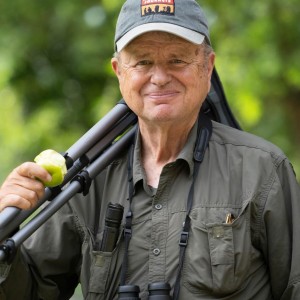
Greg recently retired as the Migratory Species Coordinator for U.S. Forest Service International Programs, working throughout the Western Hemisphere, and as Vice President for Audubon Society of Northern Virginia, serving on the Conservation and Citizen Science committees. He is currently a Board Member for BirdsCaribbean. For his Ph.D. in Zoology at University of Washington, he studied the coloration and behavior of Bullock’s Orioles. Greg studied ecology in Costa Rica with the Organization for Tropical Studies and has worked internationally for the past 20 years. Greg previously worked for the National Audubon Society, American Birding Association, Birder’s World magazine (sadly, now defunct), Partners in Flight, and Cornell Lab of Ornithology. He is a Fellow of the American Ornithological Society (AOS). He has been a birder since he was 11 and has birded in all 50 states and 47 countries.
Other trips with Greg Butcher
-
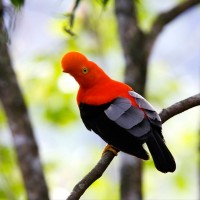 Incredible Ecuador: Chocó GaloreAugust 2 - 11, 2024
Incredible Ecuador: Chocó GaloreAugust 2 - 11, 2024 -
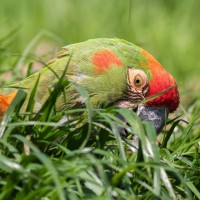 Bolivia: Birding & NatureNovember 1 - 17, 2024, w/Blue-throated Macaw Reserve extension
Bolivia: Birding & NatureNovember 1 - 17, 2024, w/Blue-throated Macaw Reserve extension -
 Northwest ArgentinaMarch 4 - 17, 2025, w/Iguazu Falls extension
Northwest ArgentinaMarch 4 - 17, 2025, w/Iguazu Falls extension -
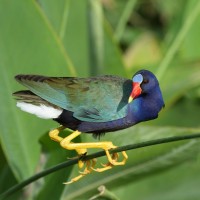 Texas Coast & Big ThicketApril 16 - 24, 2025
Texas Coast & Big ThicketApril 16 - 24, 2025
-
Pace & Protocols +
Photo credits: Banners: White-bellied Woodstar, Colombia Coffee Plant, Bay-headed Tanager, Eje Cafetero, Silver-throated Tanager Thumbnails: Velvet-purple Coronet, Red-ruffed Fruitcrow, Blue-headed Parrot, Andean Motmot, Gray-breasted Mountain Toucan, Torrent Duck, Scrub Tanager, Sword-billed Hummingbird
























